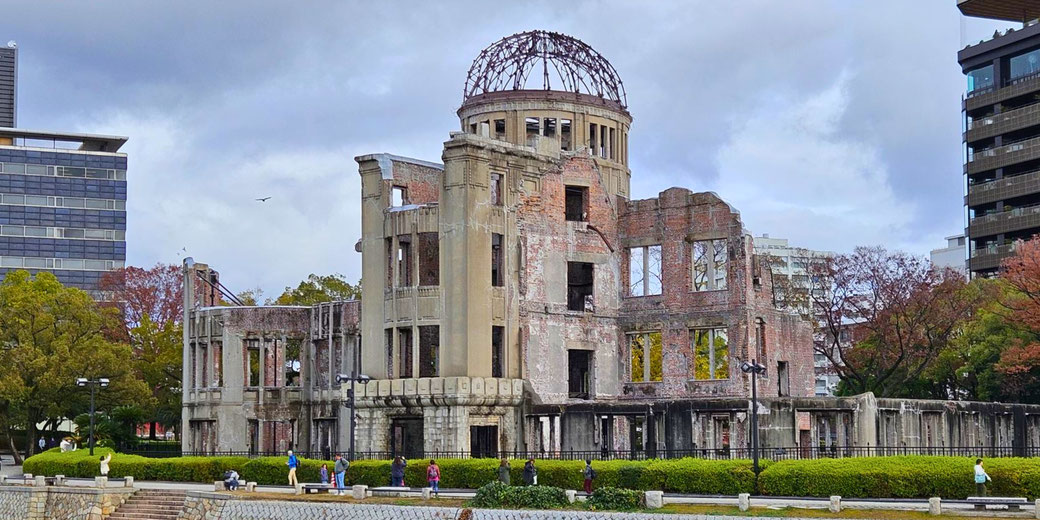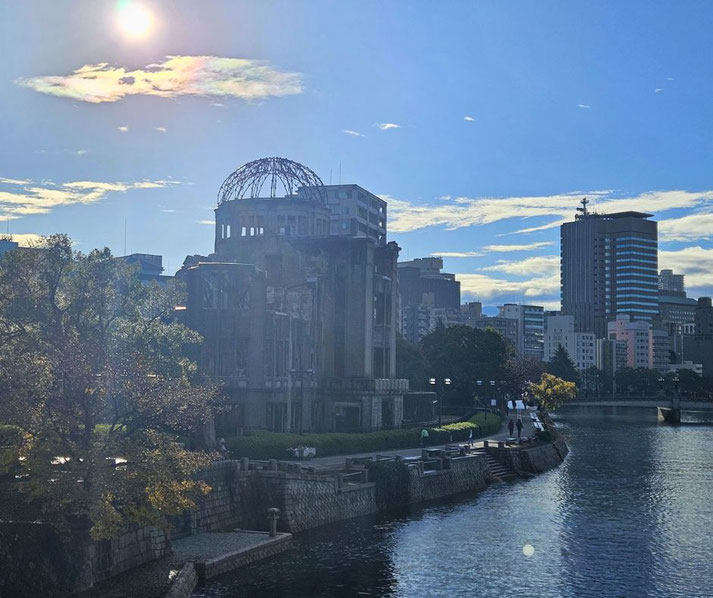The tragic history of the ‘Atomic Dome’ in Hiroshima

Among the flattened streets and devastating aftermath that followed the world’s first atomic bombing in 1945, one building’s gutted shell stood eerily intact.
Its skeletal dome still stands today, framed against Hiroshima’s modern skyline. It now invites people to reflect on how committed societies are to global peace.
Original purpose and military importance
The building originally operated as the Hiroshima Prefectural Industrial Promotion Hall, which Czech architect Jan Letzel designed in 1915.
Construction finished on 5 April that year, and the hall opened to the public on 5 August.
Sources rarely mention its cost, which remains uncertain, but it displayed products from local industries while providing office space for organisations that promoted commerce and cultural development in the region.
The structure featured a European-style design with a distinct copper dome, which made it a notable landmark in Hiroshima before the Second World War.
The city of Hiroshima was of strategic importance during the war because it acted as a key military hub for southern Japan.
The city, which had a population that ranged between 255,000 and 350,000 after wartime evacuations, had factories that produced weapons and military supplies, as well as a major communications centre, supply depots, and the Second General Army Headquarters that coordinated defence for southern Japan.
It had not been attacked in Allied bombing raids before August 1945, which gave American planners confidence that the damage caused by a single atomic bomb would be easy to measure.
On 6 August 1945, the United States dropped the first atomic bomb used in warfare, which the crew of the B-29 Superfortress Enola Gay, piloted by Colonel Paul Tibbets, released at 8:15 a.m.
The bomb was nicknamed “Little Boy” and used uranium-235 as its fissile material, which exploded about 580 metres above the city.
It produced a blast equivalent to approximately 15 kilotons of TNT. The explosion created an intense fireball and shockwave that levelled most structures within a radius of about 1.6 kilometres, and the heat at the hypocentre reached extreme levels that ignited widespread fires.

Destruction and preservation efforts
The Industrial Promotion Hall stood about 160 metres from the hypocentre of the blast.
Because the bomb detonated overhead, the building’s vertical concrete walls avoided the worst of the lateral blast forces that flattened most structures nearby.
Its copper dome collapsed, and the interior burned, yet sections of the steel frame and brick walls survived.
Thousands of people inside and around the building died instantly from the explosion and thermal radiation.
The fires burned for hours afterwards and created a firestorm that consumed large parts of the city.
Hiroshima as a whole experienced widespread destruction, with an estimated 70,000 to 80,000 people killed instantly and as many as 140,000 dead by the end of 1945 from injuries or radiation exposure.
In the aftermath of the war, the Atomic Dome became a powerful reminder of the devastation.
Local authorities considered demolishing the ruins, but citizens and officials decided to preserve them as a constant reminder of the horrors of nuclear warfare.
In 1966 the Hiroshima City Council resolved to maintain the building permanently, and the site became part of Hiroshima Peace Memorial Park, which architect Kenzo Tange designed.
In 1996 UNESCO designated the Atomic Dome as a World Heritage Site.
However, the United States withdrew its delegation from the decision, and China expressed reservations.
Regardless, the project proceeded, but it has undergone several preservation projects to prevent further decay, with careful work done to maintain its original condition after the bombing.

Generations of visitors have journeyed to the Atomic Dome to remember the victims of the atomic bomb.
Each year on 6 August, thousands gather at the Peace Memorial Ceremony, during which the Peace Bell is rung and paper lanterns are floated on the Motoyasu River.
The building survives today as the only structure left near the hypocentre of the explosion.
Its ruins show the immense suffering caused by the attack and the determination of Hiroshima’s citizens to promote peace in the years that followed.
What do you need help with?
Download ready-to-use digital learning resources
Copyright © History Skills 2014-2025.
Contact via email
With the exception of links to external sites, some historical sources and extracts from specific publications, all content on this website is copyrighted by History Skills. This content may not be copied, republished or redistributed without written permission from the website creator. Please use the Contact page to obtain relevant permission.





